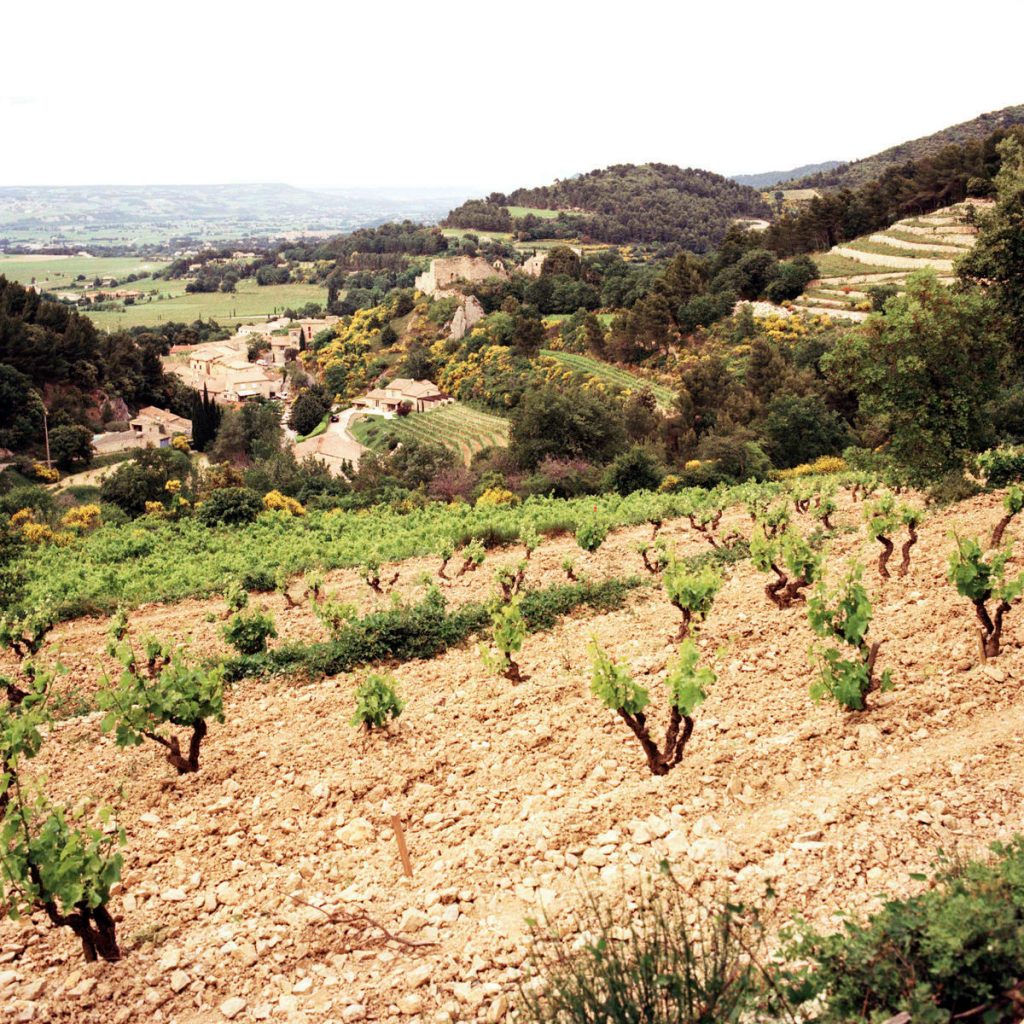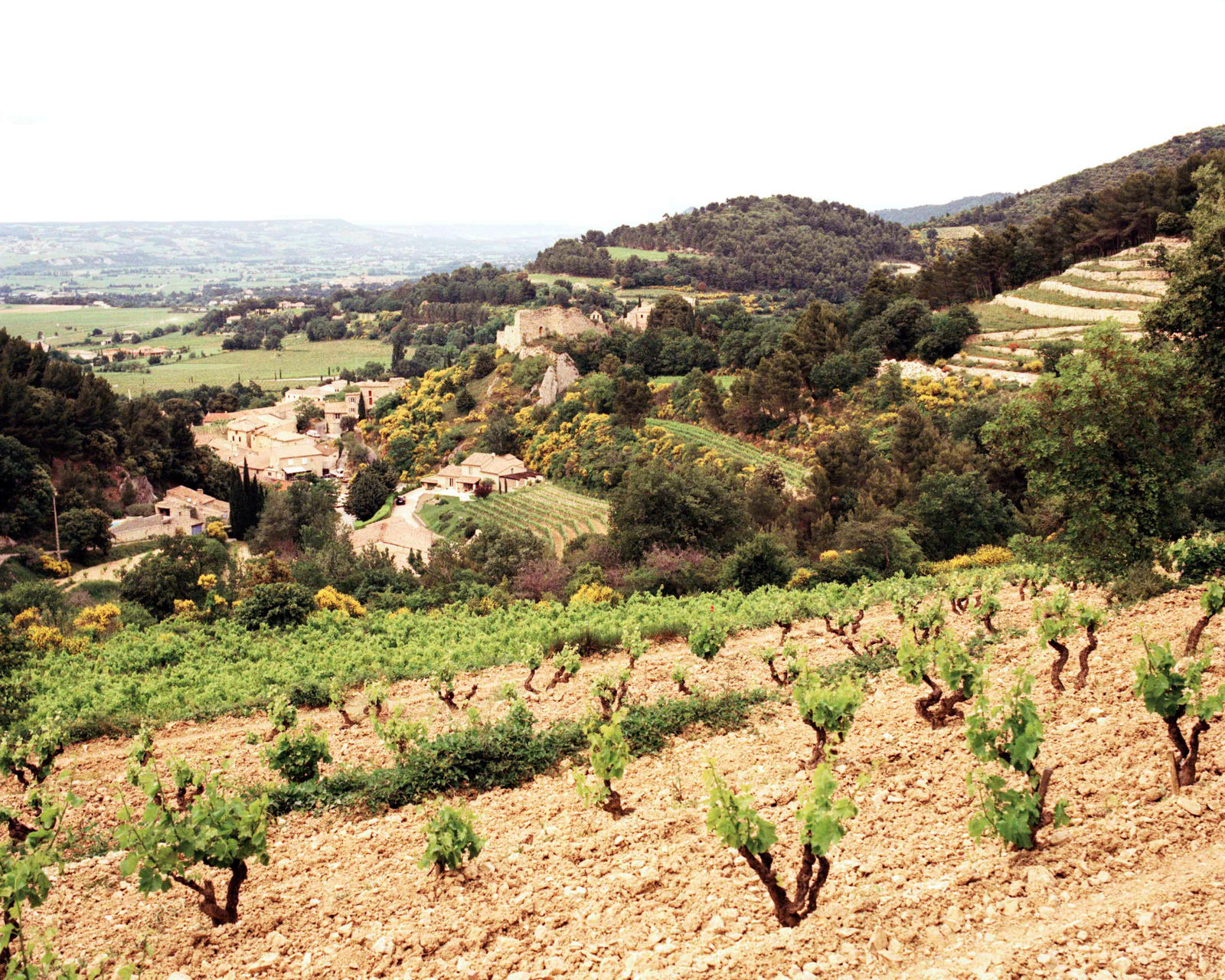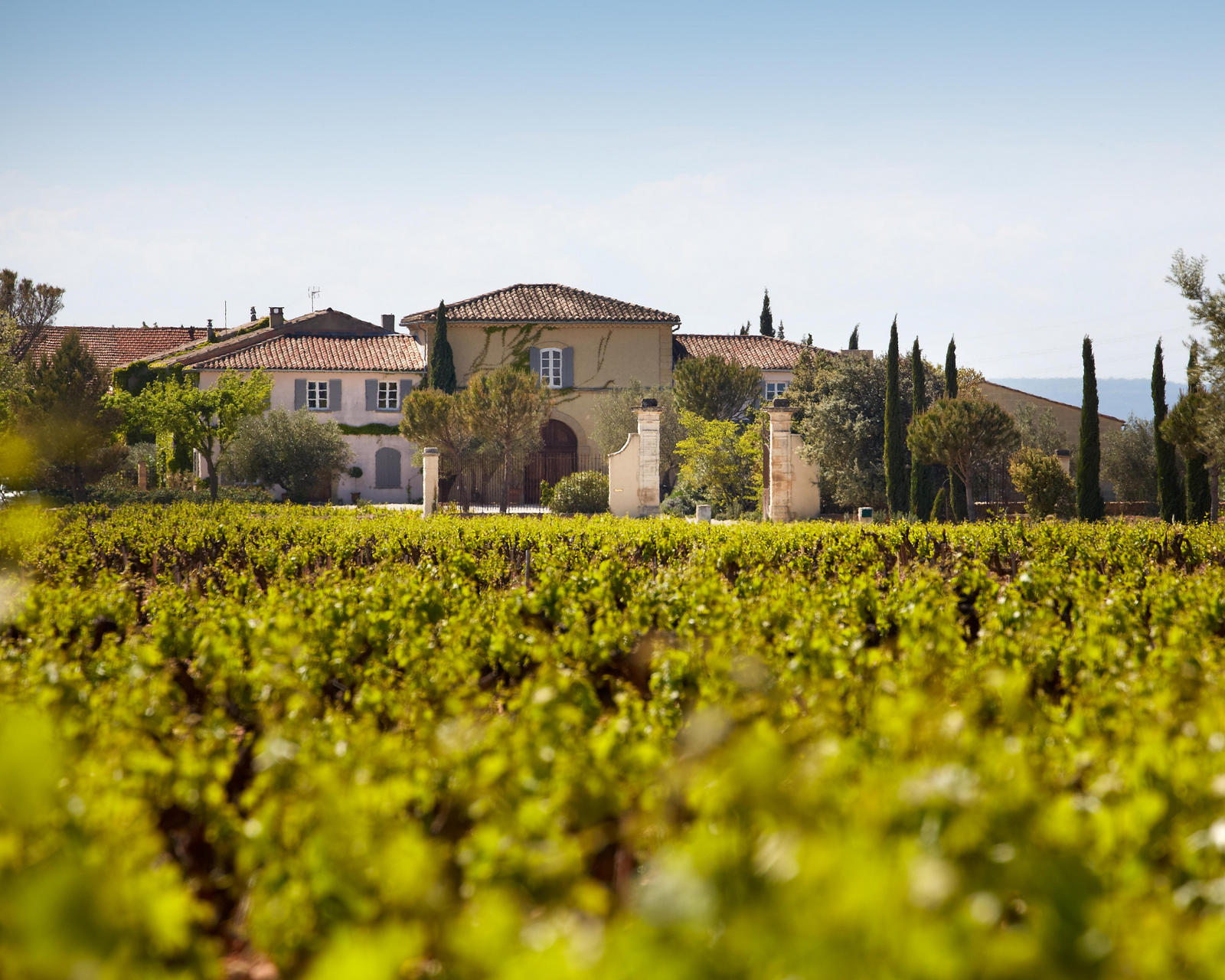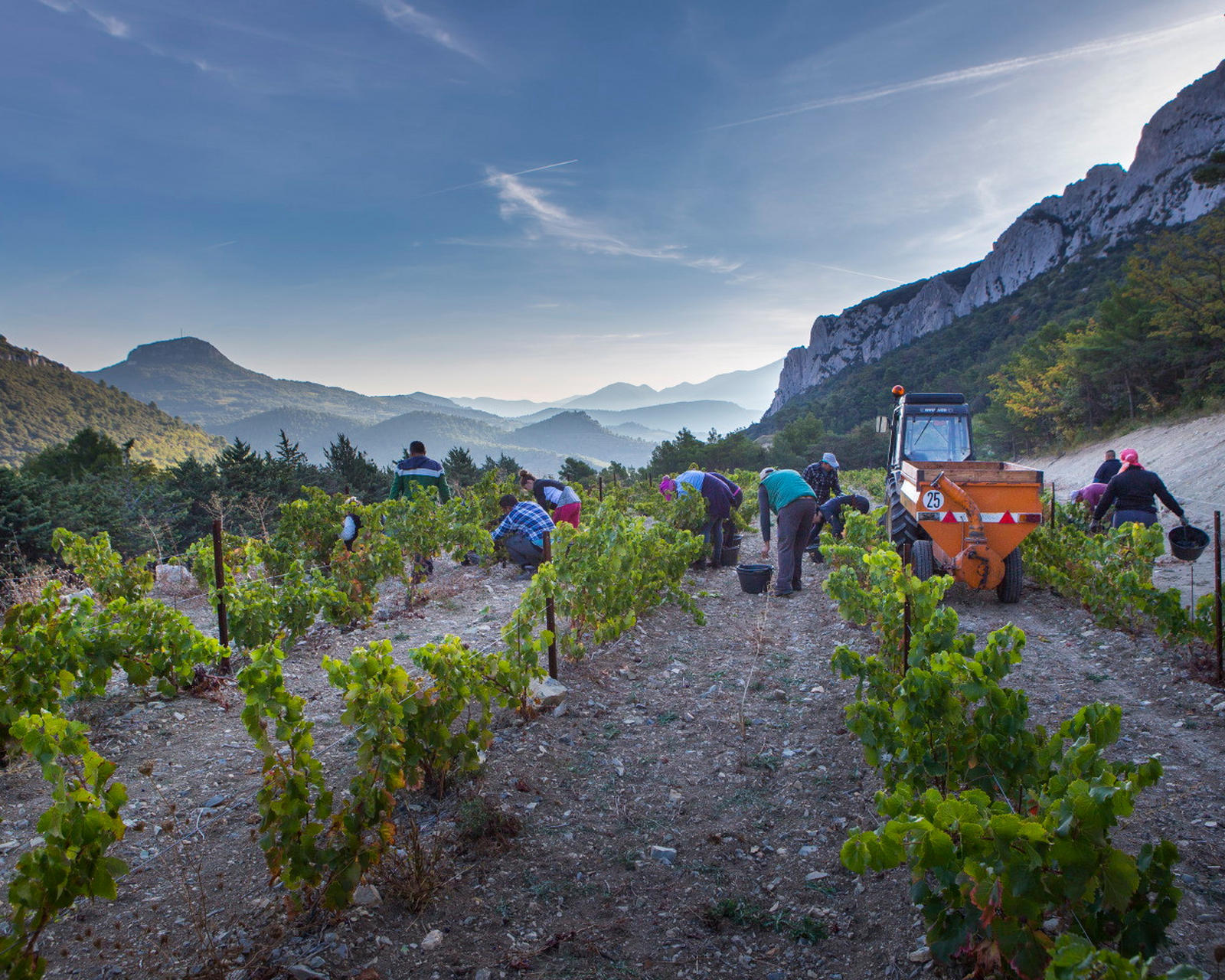A day in Gigondas
Author: Mark Pardoe MW

For a week in February, our Wine Director Mark Pardoe MW visited the Southern Rhône with our Buyers Catriona Felstead MW and Georgina Haacke. Here, he shares some of his favourite moments from his visit to Gigondas.
For some, Gigondas has the reputation of merely being a mini-Châteauneuf-du-Pape. While it is true that both appellations champion the Grenache variety, that is where the similarities end. The soils, especially the topographies, are very different. As proof of its potential, the appellation has attracted the Brunier family of Vieux Télégraphe and the Perrins of Château de Beaucastel – both have increasingly important domaines in the appellation.
However, it is the diversity and individuality of the wines of Gigondas that encouraged us to dedicate a day during our trip to the village and its surrounding vineyards.
SETTING THE SCENE
You can’t miss Gigondas. The pretty mid-slope village and vineyards scale up towards the Dentelles de Montmirail – striking fingers of eroded limestone on the mountain tops, a landmark visible from miles away. These also influence the composition of the vineyards: the higher the vineyards on the slope, the greater the influence of limestone.
The topography includes salt and gypsum from its days as a seabed before it became a form of sandstone on the mid-slope. From above, you’ll find sandy clay and eroded limestone scree. Below the village, the flatter land towards the Ouvèze river is composed more of gravels, larger stones and silt.
Most producers have vines across a combination of these soil types. Due to this, the wine of Gigondas has traditionally been a blend of terroirs, but there is an increasing trend towards separating certain plots due to their specific personalities.

DOMAINE LES PALLIÈRES
A fine illustration of this trend was found during our first visit of the day. We had a chilly, 9am start with Daniel Brunier on a crystal-clear morning, although we were out of the dazzling sun – standing on the western flank of the Dentelles at Les Pallières. This early protection from the sun coupled with the vineyard’s high altitude – between 250 and 400 metres – gives these wines attack and focus.
The domaine was bought by the Bruniers of Vieux Télégraphe in 1998. Since 2007 two wines have been made: Terrasse du Diable is from the highest plots, on terraces flattened by generations of horse-drawn ploughs. Racines, the other wine, is made from the domaine’s oldest vines.
The wines are remarkably different in character; the Terrasse is granitic and tightly wound, while Racines is more mouth-filling and sumptuous. The two were blended together until ’07; but Daniel comments that their combination felt like an arranged marriage, and that the resulting blend lacked harmony.
MOULIN DE LA GARDETTE
Our next visit made the argument for the traditional blend across all the terroirs. At Moulin de la Gardette, Jean-Baptiste Meunier owns 11 hectares spread across 24 different parcels – between 100 and 300 metres in elevation. The majority lie mid-slope around the village and a nearby lieu-dit carries the name La Gardette.
The style he seeks is one of harmony and infusion: there are no harsh edges, no excessive tannins. The wine’s ageing in large old foudres is key to achieving this style, but this also presents a problem. The four large barrels he has are already old, but Jean-Baptiste refuses to consider even a suggestion of oak flavour in his wine. This means that replacing them can only be done by locating similarly geriatric containers.
His refusal to use strong oak certainly pays dividends. The resulting wines are limpid, rich and subtle – they are beautifully knit examples of all his terroirs.

DOMAINE DU CLOS DES TOURELLES
A short stroll downhill from Jean-Baptiste’s shop in the village square is Château de Beaucastel’s Domaine du Clos des Tourelles. The famous Perrins have taken quite a liking to the village: the substantial 18th-century house in the clos has just been fully restored, they also run a Michelin-starred restaurant and a bistro in the village centre.
The domaine’s vineyards are principally located around the house and on a mixture of sand and clay known in the region as safre. Here, a single one-hectare plot of pre-phylloxera vines is handled separately for an impressive luxury cuvée –L’Argnée. Would a local vigneron have taken the same decision, or does it take an outsider to see the opportunity?

LA BASTIDE ST VINCENT
The contrast between our first visit of the afternoon and La Bastide St Vincent could not have been greater. The domaine is in Violès, on the other side of the Ouvèze and just outside the Gigondas appellation. In Laurent’s compact tasting room in the front hall of his family home, we tasted his two Gigondas wines: his normal cuvée and Costevieille, from the oldest vines and aged in barriques.
With vines on each of the three sectors, Laurent has also seen the opportunity for an old vine cuvée, but, unlike the L’Argnée, the wine is not plot-specific. But what Laurent does offer is authenticity and value. The wines have no airs and graces. They are not as polished as those at our earlier visits. However, they are just as stocky and genuine as the man himself.

DOMAINE DU CAYRON
Our concluding visit was a new venture for us: Domaine du Cayron, where we were met by sisters Cendrine and Roseline Faraud. Simplicity is a virtue in this domaine, for they make just one wine. It is crafted from 17 hectares across all the terroirs but also from old vines in Bois de Menge and high vineyards at 400 metres in the Col du Cayron.
To fully understand this “sense of place”, we drove into the mountains to the valley of Col du Cayron. There, we ascended on foot for views of the whole appellation to the west, with the Dentelles above and surrounding forest of holm oak and pine below. This was a truly life-affirming coda to the visit.
We realised in this moment how need more Gigondas in our portfolio. We want to demonstrate its range and potential, and I believe that Moulin de la Gardette and Domaine du Cayron can help to provide it.
There is clear value when compared to Châteauneuf-du-Pape – especially at La Bastide St Vincent – but the appellation also has an identity of its own. Where else can you walk up from the vineyards to breathtaking views of such impressive geology and forest, and to the Fuji-like Mount Ventoux in the distance?
Browse our complete Rhône 2020 En Primeur offer here.


